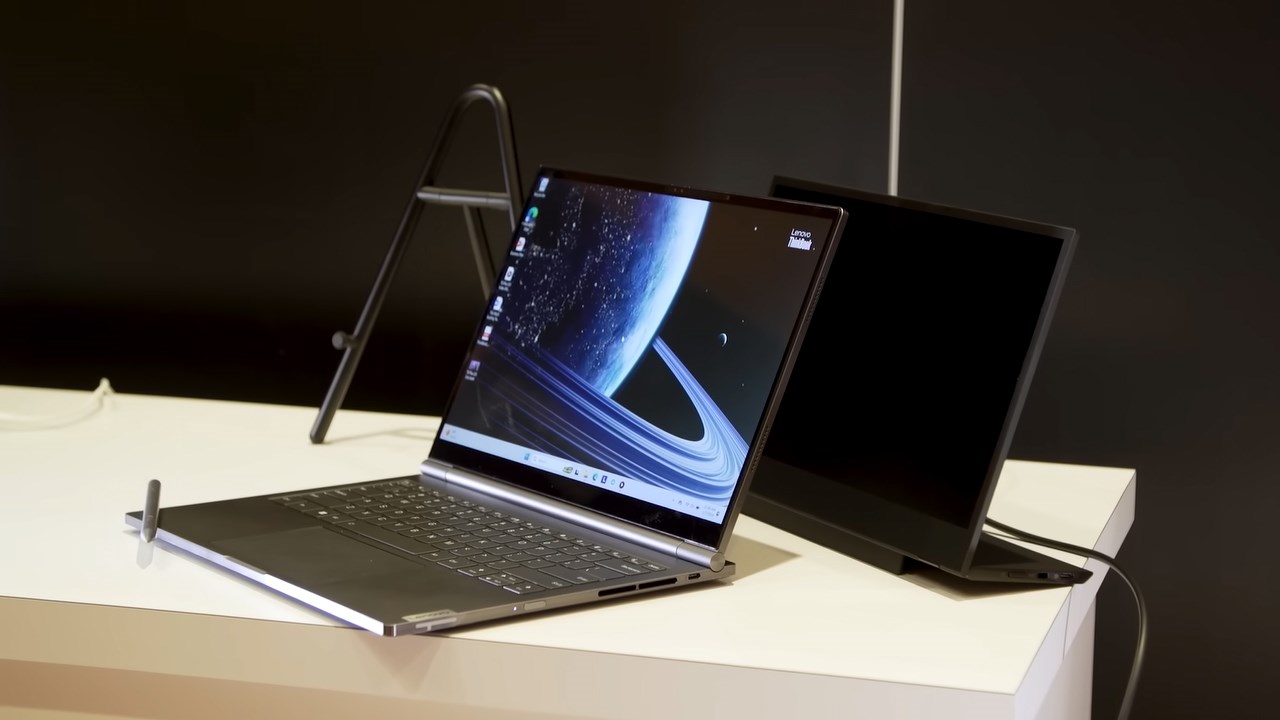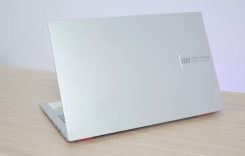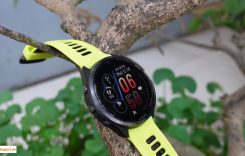At the CES 2024 event, Lenovo unveiled the Lenovo ThinkBook Plus Gen 5 Hybrid, a laptop running both Windows and Android operating systems. The device boasts a flexible design and dual processors to cater to various user needs.
Design and build
In terms of aesthetics, the Lenovo ThinkBook Plus Gen 5 Hybrid follows the familiar and sleek design of the ThinkBook product line, featuring a silver-white exterior with sharp edges, enhancing its youthful and sophisticated appeal. The device’s body is crafted from a durable aluminum-magnesium alloy, providing sturdiness and excellent resistance to impact.

The back of the Lenovo ThinkBook Plus Gen 5 Hybrid is equipped with dual cameras, 13MP and 5MP, satisfying basic photography needs. On the front, the device features a 1080p webcam that supports facial recognition through Windows Hello.
download interesting ringtone at: ringtonesonic.com
2 mode feature
One distinctive feature that sets the Lenovo ThinkBook Plus Gen 5 Hybrid apart from other laptops is its ‘Hybrid’ nature, as implied in its name. Specifically, the device allows users to separate into two independent units, each with its own processor and operating system to serve different purposes. Lenovo has aptly named these two halves as ‘Hybrid Station’ (the base) and ‘Hybrid Tab’ (the touchscreen tablet).
In default laptop mode, the Lenovo ThinkBook Plus Gen 5 Hybrid runs Windows 11, functioning like a typical laptop. Additionally, the Hybrid Station base enables users to connect to an external monitor, transforming it into an independent Windows 11 desktop. The Hybrid Tab screen allows users to experience the Android 13 interface on an oversized tablet.
Display on Lenovo ThinkBook Plus Gen 5 Hybrid

For display, the ThinkBook Plus Gen 5 Hybrid sports a wide 14-inch OLED screen with a 2.8K resolution (2,880 x 1,800 pixels), achieving 100% DCI-P3 color coverage for vibrant and sharp multimedia experiences. The screen is touch-enabled, allowing users to interact, take notes with the Lenovo Tab Pen Plus, or watch videos when placed on Lenovo’s versatile stand.
Connectivity
On the sides of the thinkbook, you’ll find a Thunderbolt 4 port and a 3.5mm headphone jack on the left side, and another Thunderbolt 4 port and a power button on the right side. In general, the connectivity options on the Lenovo ThinkBook Plus Gen 5 Hybrid are relatively limited, requiring users to use specialized USB hubs for various external devices.
Fast and Efficient Performance
In terms of performance, the Lenovo ThinkBook Plus Gen 5 Hybrid is impressive. In laptop or Hybrid Station mode, the device is equipped with the Intel Core Ultra 7 processor, a new chip integrated with advanced AI processing technologies to enhance overall performance and cater to AI-related tasks in work, entertainment, and more.

On the other hand, the Hybrid Tab of the Lenovo ThinkBook Plus Gen 5 Hybrid features the Snapdragon 8+ Gen 1 chip, a robust processor familiar to users of high-end smartphones. With 8 cores and improvements in heat and power management, the Snapdragon 8+ Gen 1 promises to meet the daily usage needs of users effectively.
Additional Features
According to Lenovo, when separating the two parts of the Lenovo ThinkBook Plus Gen 5 Hybrid into two independent devices, users can still interact between the two through the Hybrid Stream mode. This mode allows users to stream Android apps on the detached screen with high quality and low latency or easily transfer files and data between the two halves of the device.
Battery life
Moreover, the Lenovo ThinkBook Plus Gen 5 Hybrid comes with a 75 Wh battery for the Hybrid Station and a 38 Wh battery for the Hybrid Tab. Alongside this, the device supports a 100W charging capacity, enabling users to quickly charge the device and experience prolonged usage when the battery is full.
Conclusion
The Lenovo ThinkBook Plus Gen 5 Hybrid represents a breakthrough innovation from Lenovo in the lightweight office laptop category. With this device, users can efficiently handle various complex tasks such as graphic design, app programming, gaming, etc., in a much more flexible and convenient manner compared to traditional laptops.









